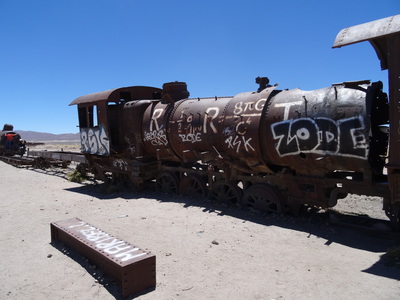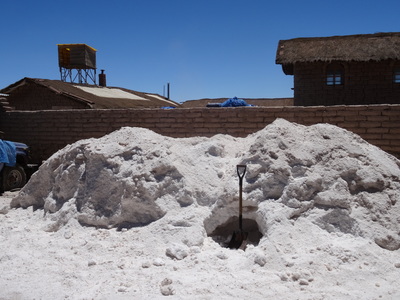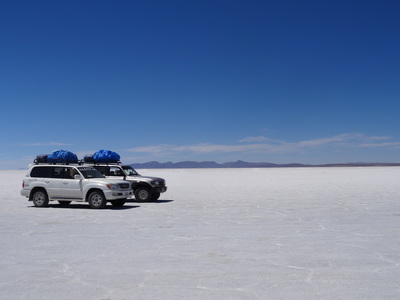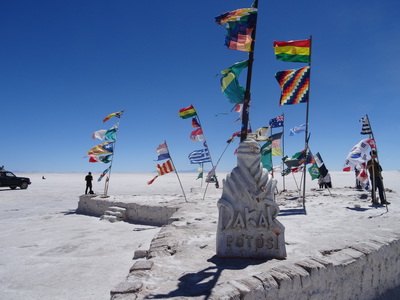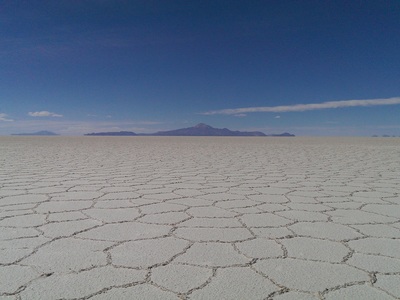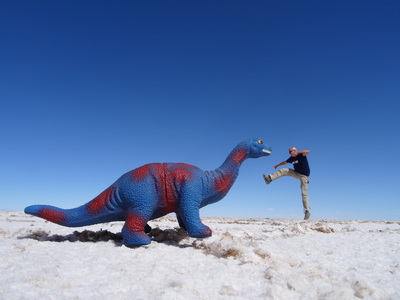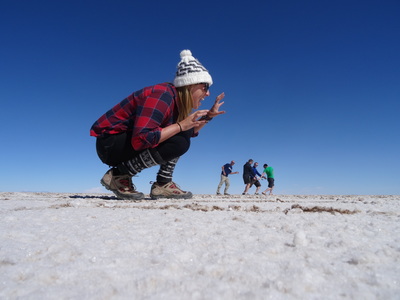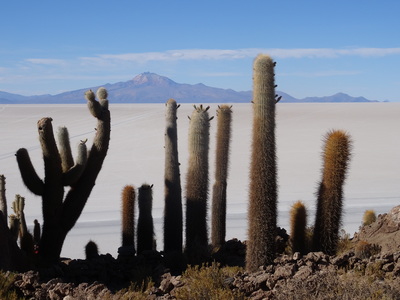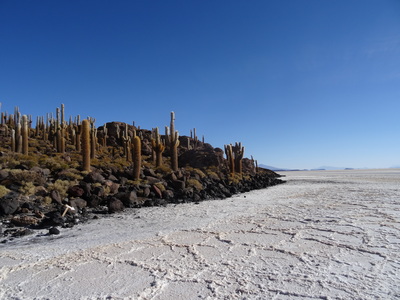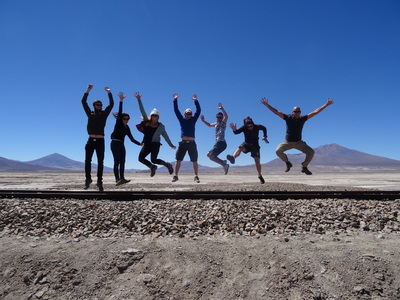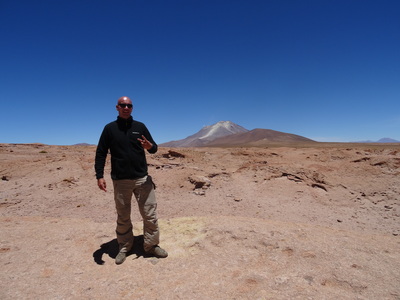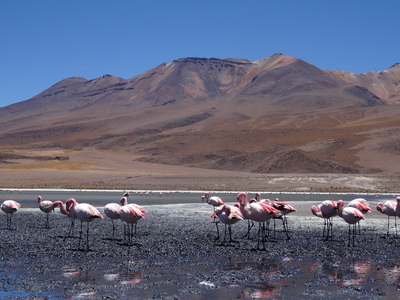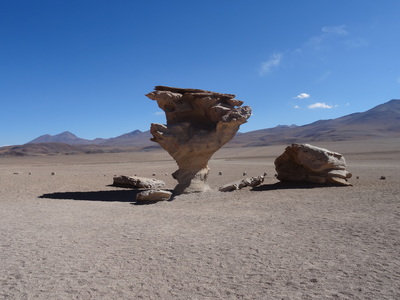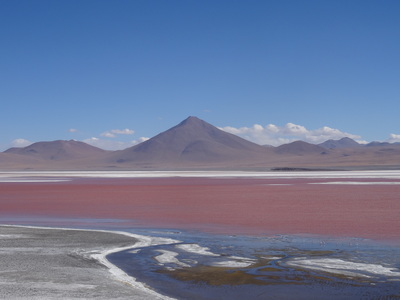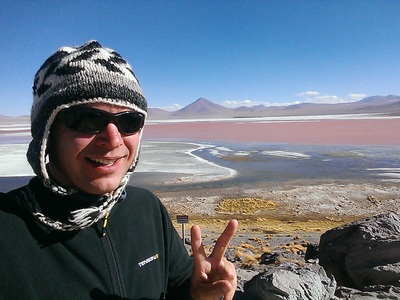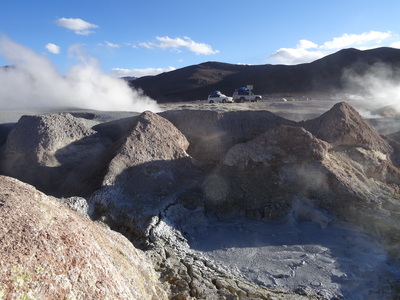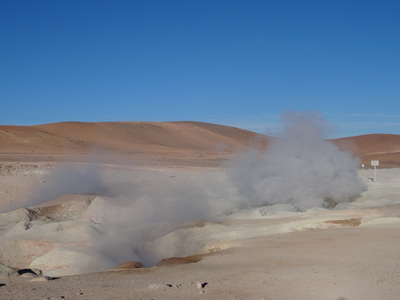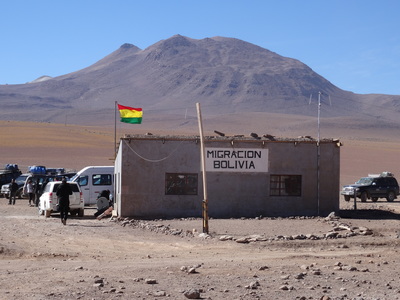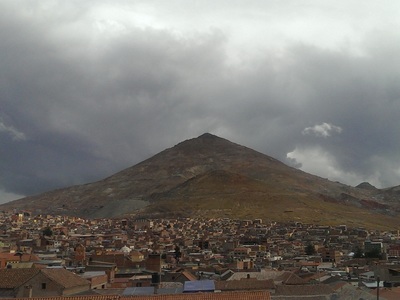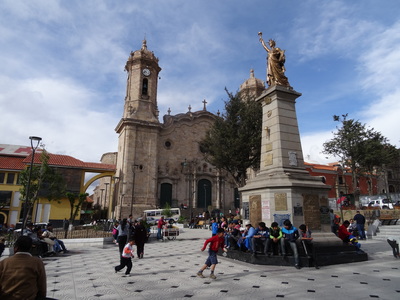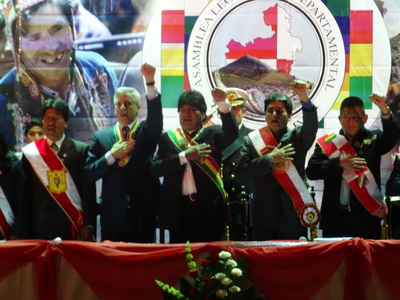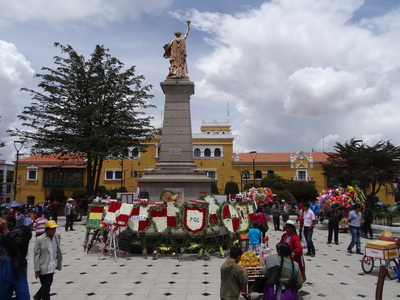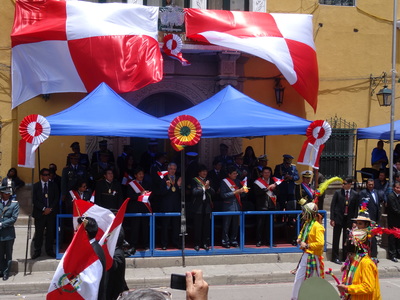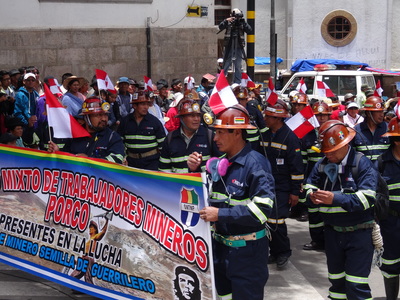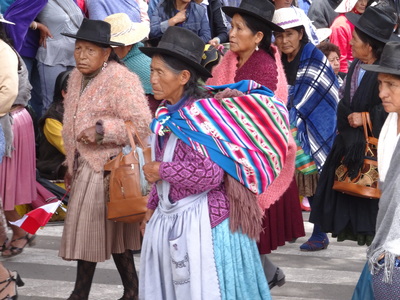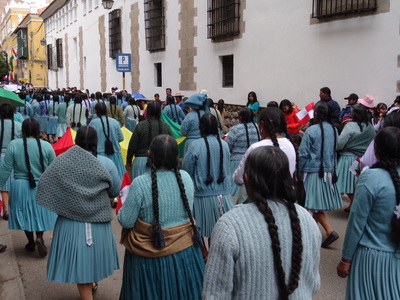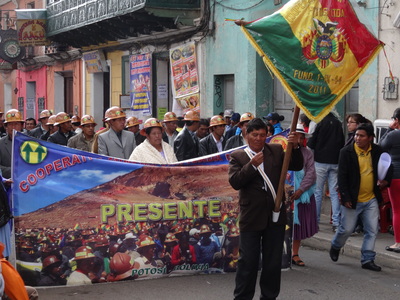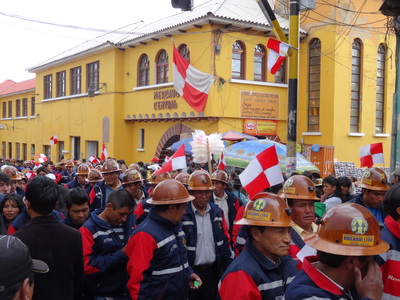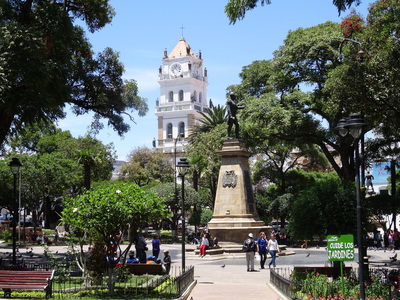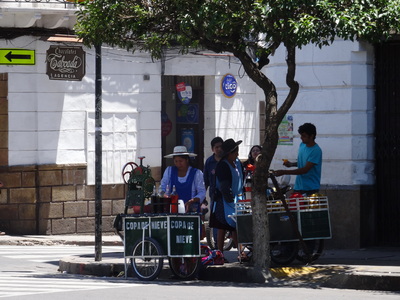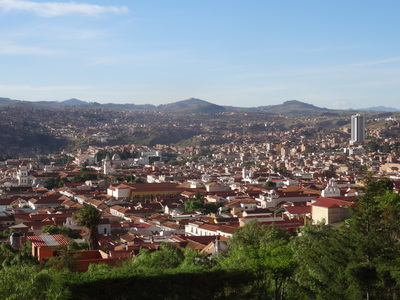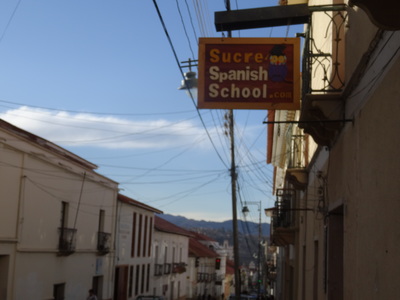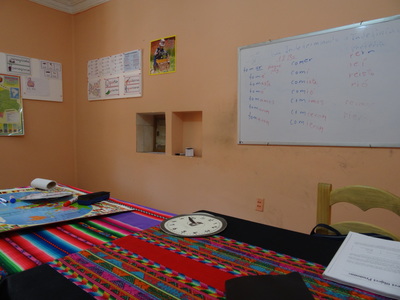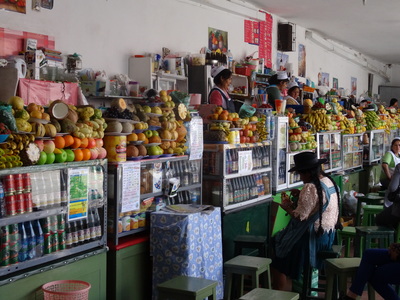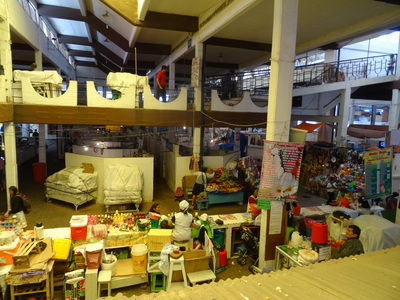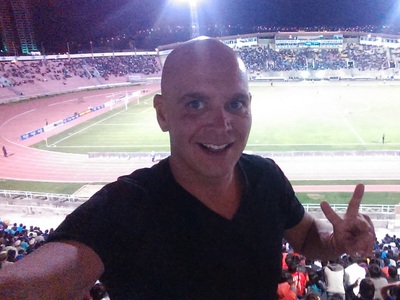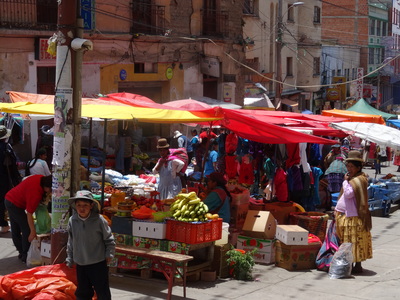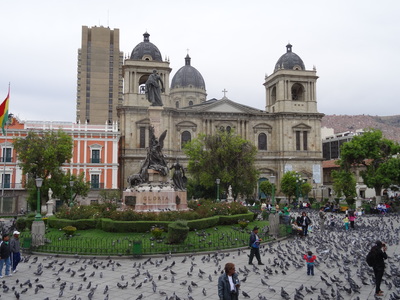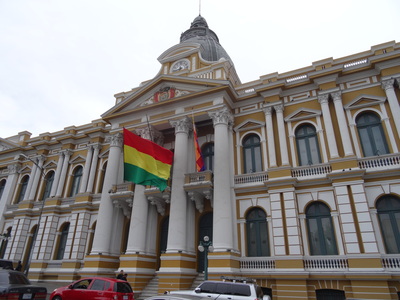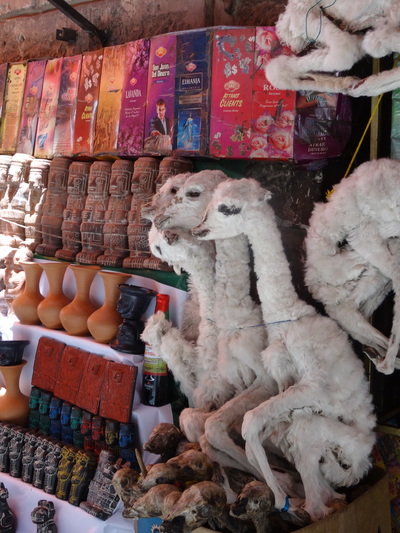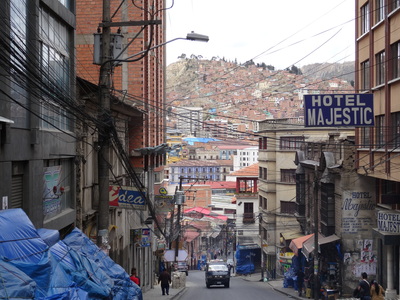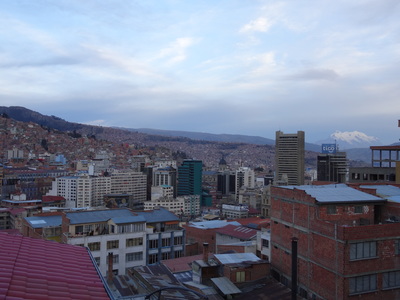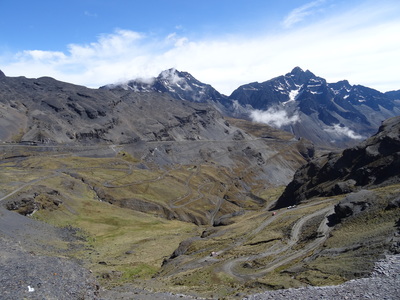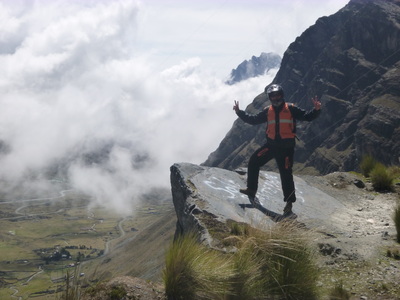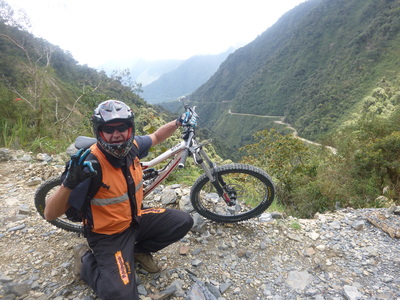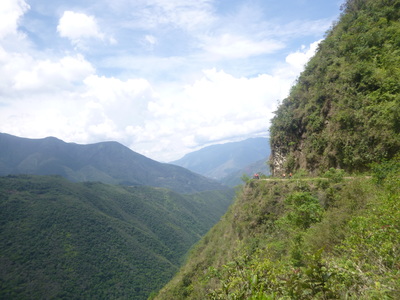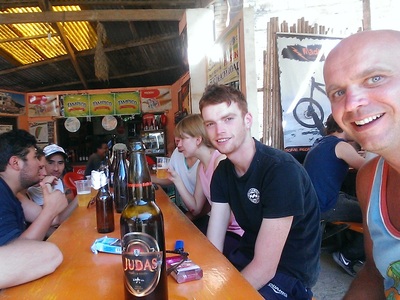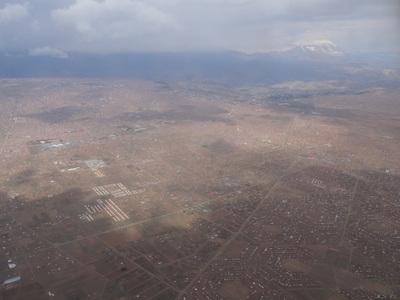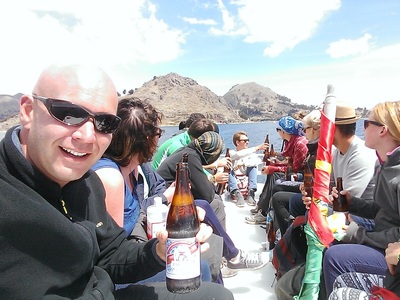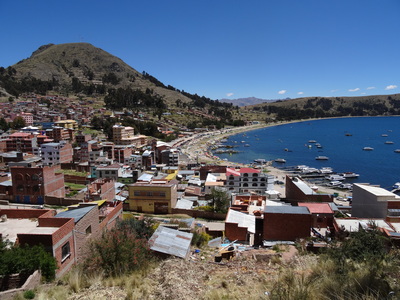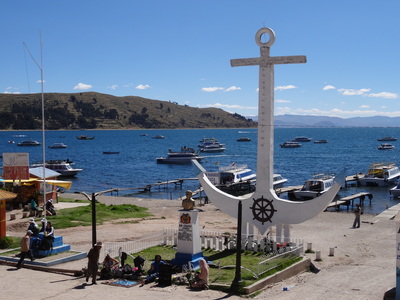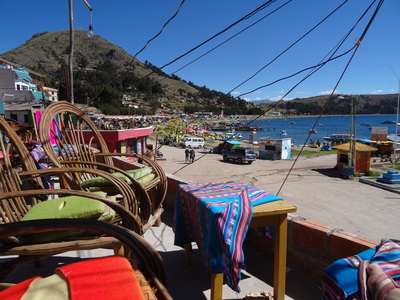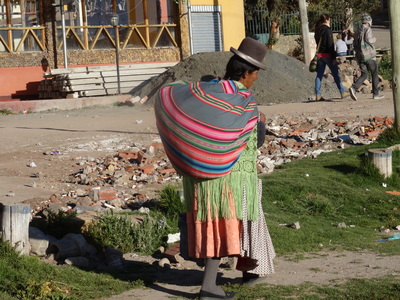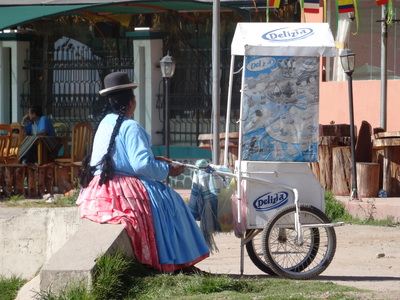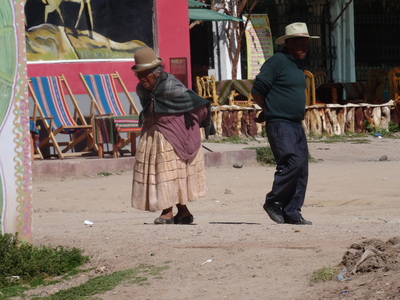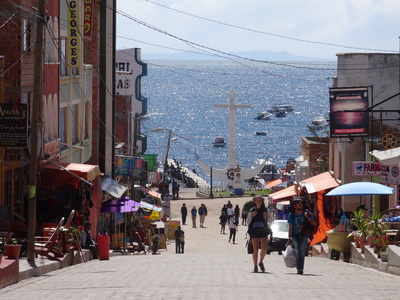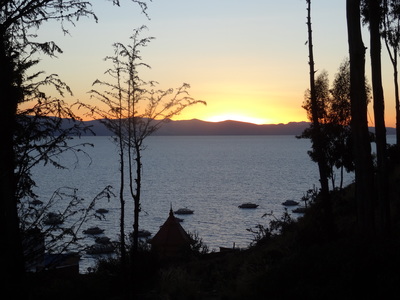|
I continued through the Andes to Uyuni, the starting point of my 3-day Salar de Uyuni tour to the border with Chile. On the first day we started the tour at the train cemetery and drove miles and miles on the salt flats. Now and then we got out of the car to take some pictures. We slept in a guesthouse made out of salt. On the second day we passed beautiful sceneries like rock formations, colourful lagunas, active volcanoes and geysers. During the cold night we took a bath in a natural hotspring while watching the stars in the sky. The amount of stars we could see was really amazing. On the last day we arrived at the border. We had to wait two hours before a bus came to take us to Santiago in Chile.
0 Comments
Potosi is supposed to be the highest city of the world at an altitude of over 4000m. The city played an important role in Bolivian history because of the Cerro Rico, a hill that contains silver. When I arrived in Potosi Liberation Day celebrations were going on. I explored the city and by surprise I ended up in the room where Bolivian President Evo Morales was giving a speech to the Potosian people. I didn't understand much of his speech though.
The celebrations went on for 24 hours with parades through the streets of Potosi. Many groups of miners and social communities participated in the parades. Therefore it was not possible to go into the silver mines for a tour. I didn't feel sorry to miss out on this one. I felt privileged to witness the local Liberation Day festivities. A flight took me from La Paz to Sucre (I didn't fancy the 13 hours busride). Sucre is the official capital and symbolic heart of Bolivia. In this city Bolivia's independence was proclaimed.
Sucre is populated by many students and it is a known place for backpackers to learn Spanish. I booked a week of private classes at the Sucre Spanish School. Having class for 4 hours in the morning left me plenty of time to stroll around the city in the afternoons. The central market was the perfect place to drink a fresh fruit juice. In the evenings I gathered with the other travellers in the hostel. One night we went to the football stadium to see the current champion of Bolivia (Universitario Sucre) playing against San José. It was not the South American samba-football I was expecting to see. We blamed the high altitude for that. The largest city and unofficial capital of Bolivia La Paz is situated in a valley at 3660m altitude. Several markets are found in La Paz, among them is the Witches market (Mercado de Hechiceria) where all kinds of strange powders and foetuses were sold. I joined the Red Cap Walking tour and learned a lot about the city, the Bolivian culture and politics.
One hour outside of La Paz lays World's Most Dangerous Road from La Cumbre to Coroico. Nowadays this road is almost exclusively used by cyclists to do the 64km 3600m vertical descent. Since Dutchies are used to biking, I didn't fear the road and I enjoyed the downhill ride. For the first 20 kilometres we could speed down on paved roads followed by an unpaved path with spectacular views. It was not that dangerous at all. Only 15 minutes after crossing the Peru-Bolivia border we reached Copacabana. This small town in perched on the southern shore of Lake Titicaca (world's largest high altitude lake at 3800m). It used to be a site of religious pilgrimages for centuries. Nowadays it's the gateway to visit Isla del Sol on the lake Titicaca. I stayed here for 5 days to chill out on the lakeside and to enjoy the tranquillity on one of the few lakeside terraces.
|

